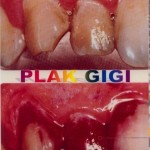Also known as conventional periodontal therapy, non-surgical periodontal therapy, or deep cleaning, is the process of removing or eliminating dental plaque, its products, and calculus – which cause inflammation,thus helping to establish a gum that is free of disease.
Plaque accumulation tends to be thickest along the gumline. Due to the proximity of this area to the gum tissue, the bacterial plaque begin to irritate and infect the gums. This infection of the gum causes inflammation known as gingivitis, which literally means inflammation of the gingiva, or gums. Gingivitis is characterized by swelling, redness and bleeding gums. It is the first stage of gum disease, and the only step which can be fully reversed to restore one’s oral health.

under microscope
As the gingivitis stage continues, resulting in more bleeding when brushing, flossing. This is the body’s attempt to clear the infection from the tissues. Thus, bleeding is generally accepted as a sign of active oral infection.
As the gum disease progress the plaque eventually transforms into calculus, and the process continues, resulting in deposits under the gum, and an increase in pocket depth and bone loss. This bone loss marks the transition of gingivitis to true periodontal disease.
These processes will persist, causing greater damage, until the infectious bacterial agents (plaque) and local irritating factors (calculus) are removed. In order to effectively remove these at this stage in the disease process, brushing and flossing are no longer sufficient. Brushing and flossing are only effective at removing the soft materia above gum areas.. Therefore, in order to remove the causative factors that lead to periodontal disease, deep scaling and root planing procedures are generally recommended.
Once the bacteria and calculus are removed from the periodontal pocket, the tissue can begin to heal. However, the damage caused by periodontal disease never heals completely. Any bone loss that occurs due to the disease process is irreversible. The gingival tissue of the gums also tends to suffer permanent effects once the disease reaches a certain point. Because gum tissue requires bone to support it, if bone loss has been extensive, a patient will have permanent recession of the gums, and therefore exposure of the roots of the teeth in involved areas. If the bone loss is extensive enough, the teeth may begin to become mobile, or loose, and without intervention to arrest the disease process, will be lost.
Contrary to old beliefs, it is not a normal part of aging to lose one’s teeth. Rather, it is periodontal disease that is the main cause of tooth loss in the adult population.


